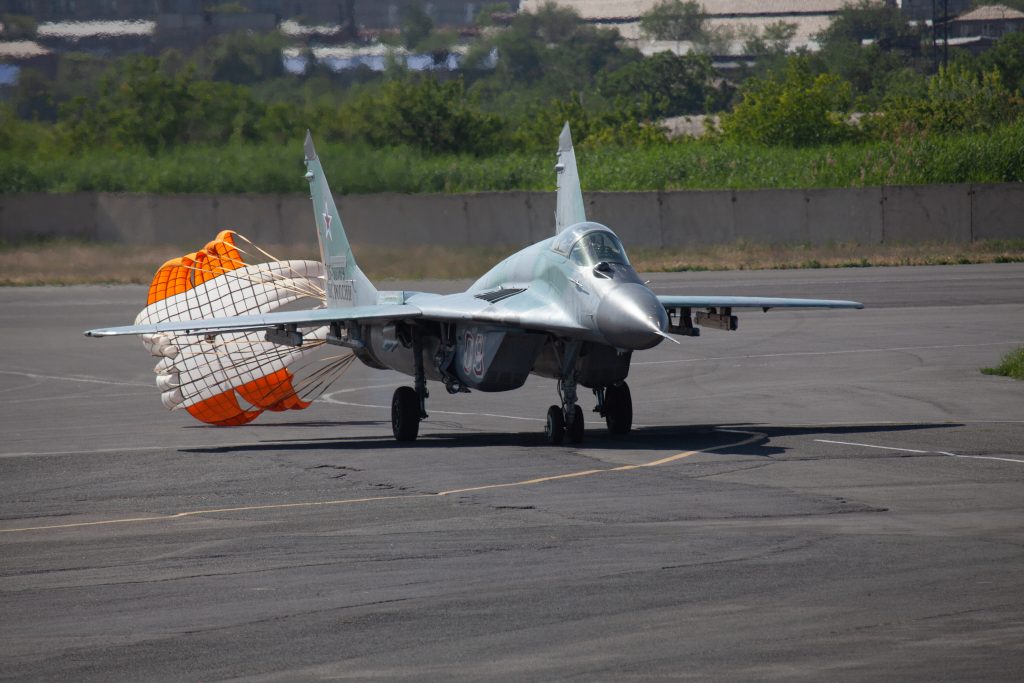Military contractor Lockheed Martin (NYSE: LMT) is in the business of building fighter jets — and business is booming. In a pair of Earth-shaking announcements last week, the U.S. Defense Security Cooperation Agency (DSCA) informed Congress of a plan to sell a combined $31.6 billion in new weapons sales to Greece and Turkey.
But the biggest of these deals is for Turkey.
Why is Turkey buying 40 new F-16 fighter jets?
As you may already know, DSCA is the Pentagon department responsible for coordinating sensitive weapons sales between U.S. defense contractors and foreign governments. Turkey says it wants these new fighter jets to “expand and modernize” its air force, which currently comprises primarily older F-16C Falcon and F-4E Phantom fighter jets. Before this sale can go through, though, the U.S. State Department must sign off on the deal as supporting “the foreign policy goals and national security of the United States” and unlikely to “alter the basic military balance in the region” — in this case, southern Europe — and Congress must either approve or reject the sale.
That’s the stage we’re at in this process right now.
Absent a refusal by Congress, therefore, Lockheed Martin will be named the “principal contactor” on a deal to sell Turkey 40 brand-new F-16 fighter jets. It will also upgrade 79 F-16s that Turkey already owns to a new F-16V (for “Viper”) configuration.
Adjacent to this work, Lockheed will coordinate the delivery of some 48 F110-GE-129D engines from General Electric (NYSE: GE), along with radars, navigation systems, missile launchers, and auto-cannons — and more than 3,000 assorted bombs, missiles, and “smart bomb” guidance kits from a whole series of other U.S. defense contractors.
Total cost for all this hardware: $23 billion.
Why is Greece buying 40 new F-35 fighter jets?
And that’s not all.
Greece also wants to “modernize its air force.” So simultaneous with the Turkey announcement, DSCA advised Congress of a corresponding deal to arm Turkish neighbor Greece with 40 new F-35 Lightning II stealth fighter jets. Here, Lockheed Martin will share the principal contractor role with fellow defense contracting heavyweight RTX Corporation (NYSE: RTX), which makes the F135 engines that power the F-35, on a sale worth $8.6 billion.
In contrast to the Turkey deal, no upgrades will be involved in this sale. (This will be Greece’s first purchase of the F-35, after all.) Greece also isn’t buying a lot of ordnance, which helps to further explain the sale’s smaller size — although Greece is buying 42 Pratt & Whitney F135-PW-100 engines from RTX, and additional weapons purchases may follow. Also on the horizon may be even more sales of the F-35 as the country’s F-4E and Mirage 2000 aircraft age out of service, and potentially upgrades of Greece’s own F-16 fleet (which like Turkey’s comprises primarily older F-16C variants).
So keep an eye on that as an opportunity for future Lockheed Martin sales.
What it means for Lockheed Martin stock
As for now, the $31.6 billion in total revenue that will flow through Lockheed Martin across these two weapons deals is quite large enough to move the needle on this defense contractor. Even assuming that much of this revenue will ultimately end up at other defense companies, if we apply Lockheed Martin’s operating profit margin (10.2% for its aeronautics unit, according to data from S&P Global Market Intelligence) to the revenue at first point of impact, these two deals alone have the potential to generate in excess of $3.2 billion in operating profit.
That’s more than one full year’s worth of profit for the aeronautics division, and more than 36% of all the profit that Lockheed Martin earned across all divisions in 2023.
So what does this mean for investors? Well, it ultimately depends on how long it takes Lockheed to deliver these 80 new fighter jets to (and upgrade 79 more for) its customers. But we seem to be looking here at a combined 47% increase in sales and 36% boost in earnings compared to Lockheed’s 2023 sales and earnings. Spread that out over even, say, five years, and I anticipate this weapons deal has the potential to more than double the 3.2% annualized earnings growth rate that most analysts have penciled in for Lockheed Martin.
Long story short, analysts’ forecasts for Lockheed Martin’s growth rate are too low. And Lockheed Martin’s stock price should therefore go higher.
Should you invest $1,000 in Lockheed Martin right now?
Before you buy stock in Lockheed Martin, consider this:
The Motley Fool Stock Advisor analyst team just identified what they believe are the 10 best stocks for investors to buy now… and Lockheed Martin wasn’t one of them. The 10 stocks that made the cut could produce monster returns in the coming years.



